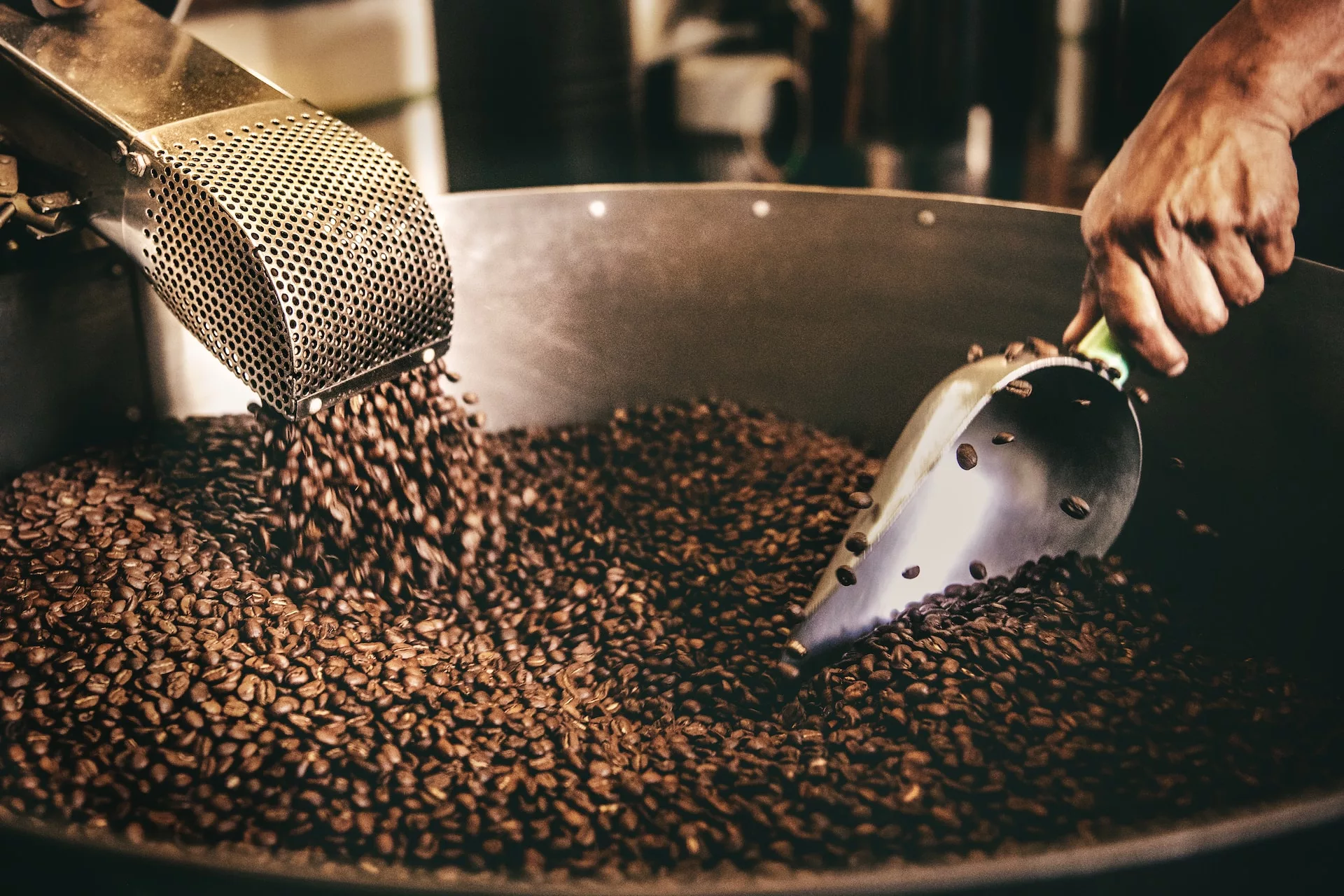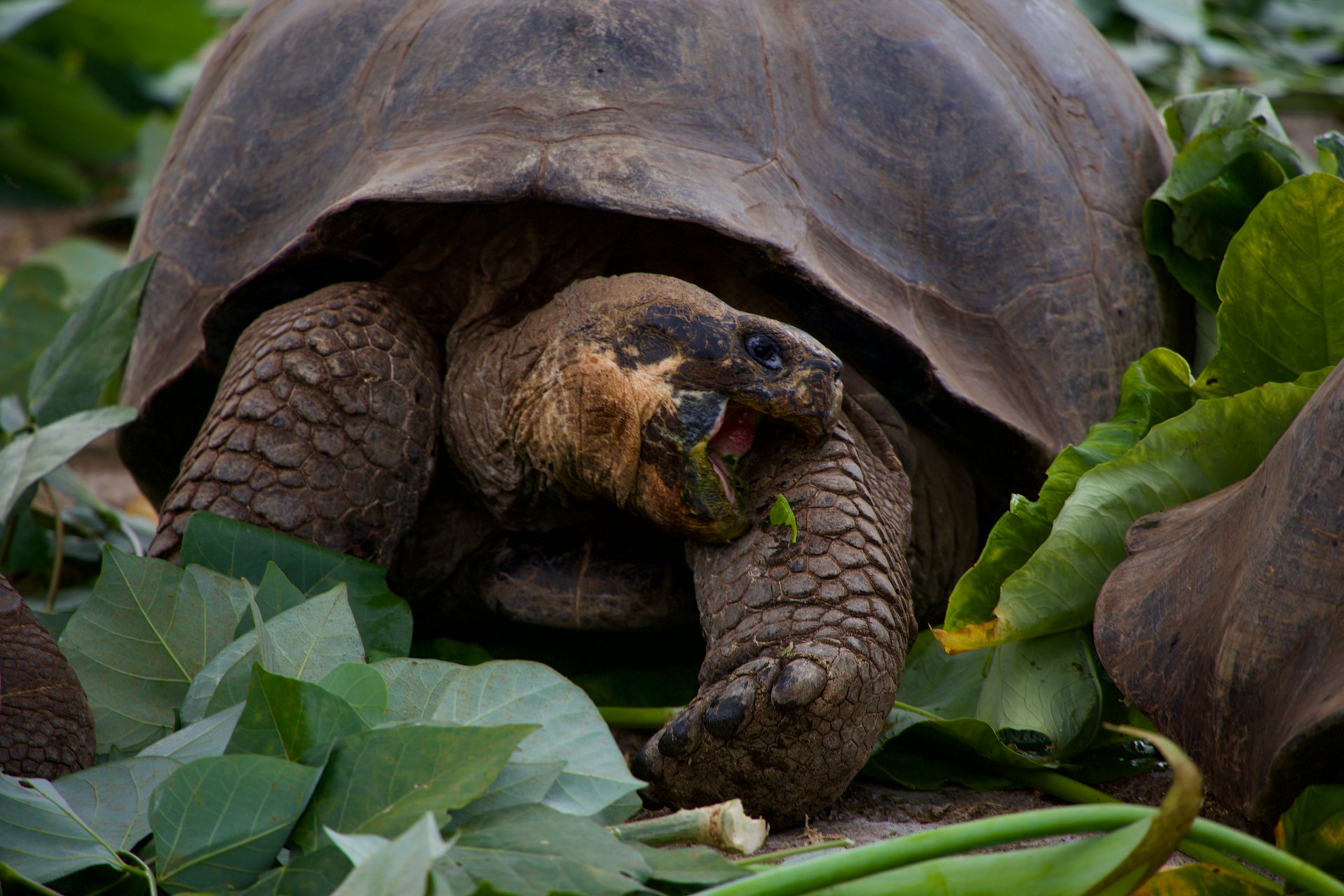Due to the high demand for coffee and variations in its flavours, more nuanced production is required, fermentation bioreactors may enable this. Photo credit: Tim Mossholder via Unsplash
As I was waiting in line for my morning caffeine spike at one of the independent cafés in Oxford, the person in front of me was asked if they would like their coffee to be prepared using fruity and floral Kenyan beans. ‘No flavourings please’, responded the customer, clearly perplexed by the suggestion. Indeed, just ten years ago the ‘Italian espresso’ style of dark-roasted bitter coffee was the only option in most cafés, whereas nowadays there is an overwhelming variety of tasting notes present in the increasingly popular scene of specialty coffee. Beneath the unintelligible labels of coffee processing methods and the jargon associated with ‘roast profiles’ lies the most fundamental reaction in all of biochemistry—fermentation. And we are slowly taking control of it.
With two billion cups of coffee being consumed every day, coffee beans lie among the most important exported agricultural goods in the world. The Italian tradition of coffee ‘al tavolo’—sitting down at a table in a café—spread around the world contagiously in the 20th century, such that the idea of coffee was very much defined by Italian espresso, most known for its lack of acidity, bitterness, and oil-like texture. The primary reason for these flavours was the very dark roast: old roasting machines were furnaces with a rotating drum above them, leading to a very uneven heat distribution within the batch. To account for this, longer roasting times were used, and coffee beans would reach an internal temperature of around 250°C, producing darker beans lacking any distinct flavour notes.
As the temperature increases, two chemical reactions are responsible for the change in flavour: caramelisation and the Maillard reaction. Caramelisation happens when sugar is heated above 160°C, and long sugar molecules called polysaccharides break down into smaller ones, producing more flavour. The Maillard reaction (named after Louis C. Maillard, a French physician and chemist) is a combination of the breakdown products of proteins and sugars, yielding small aromatic molecules that have a caramelly, sweet, and toasted smell. Both reactions are why a baked apple tastes sweeter than a fresh one and fills the house with a luscious smell. However, leave the apple in the oven for too long and charred odours with bitter flavours will take over—precisely what happens to coffee beans as they are roasted dark.
Why not just decrease the roast temperature? Coffee itself grows as a fruit, commonly called the coffee cherry, and is found on Coffea trees. The removal of the skin, pulp, and mucilage (a gelatinous protective layer covering the seeds) from the fruit exposes the green coffee bean that is then roasted, resulting in the signature brown colour of coffee.
Most industrial coffee is harvested independent of the ripeness of the fruit, quickly dried, and combined into blends, mixing coffee from different regions of the same country. This is much more cost-efficient; however, unripe or over-ripe coffee cherries are not removed from the final product. When roasted at higher temperatures, all coffee beans taste alike, whereas lower roast temperatures lead to the astringent acidity coming from underdeveloped fruit or vinegary tartness from the rotten cherries. Lower roast temperatures would expose the errors present in the coffee and thus higher roast temperatures benefit mass manufacturers.
Post-harvest processing is the step of coffee production which imparts the most flavour into the bean. Classically, there are two main ways of processing: dry (natural) and wet (washed), and they both begin with harvesting. In small farms around Ethiopia, Kenya, and other specialty coffee producers, plucking is done by hand—only the ripe fruit is selected, rotten cherries are discarded, and unripe ones are left to grow further. Natural coffee usually has stronger and more concentrated flavours, whereas washed coffee is light and brighter in the flavour palette. On a fundamental level, this is primarily because natural coffee is left to ferment for up to six weeks in the sun while washed coffee is only fermented for up to 36 hours in water.
During the wet process, the outer layers of the coffee beans are removed mechanically by rubbing the beans together using a pulping machine, removing the skin and the pulp of the coffee cherry. The same water used for the mechanical pulp removal is then used for the fermentation process where beans are left in the water for up to 36 hours, being stirred occasionally. As the coffee ferments, the microbiota (bacteria, yeast, and other living organisms) already present in the pulp water begin degrading the leftover mucilage. The microorganisms feed off the compounds present in the cells of coffee cherries.
Pectin, a structural component of the cell wall and the molecule giving marmalade its jelly structure, is digested into monosaccharides by bacteria and yeast found on the skin of coffee fruit. The warm, wet environment benefits the microbiota, which produces flavourful alcohols and organic acids together with olfactory molecules like esters and aldehydes by fermentation. Studies by Knopp et al. (2006) revealed that washed coffee contains significantly lower levels of glucose and fructose when compared to natural processing, allowing for the fruity acidity to shine. Lee et al. (2015) suggest that secondary metabolites produced by the microbiota act as precursors to the flavour developed during roasting, therefore more nuanced fermentation methods may yield more complex flavour profiles. One such example is complete anaerobic fermentation where the use of oxygen-free containers yields a wine-like acidity and thicker texture enjoyed by aficionados.
While clearly enhancing the final flavour of coffee beans, fermentation does not come without its drawbacks. First, there is no precise way of tracking the completion of the process: washed fermentation is carried out until coffee beans feel rough rather than slimy when rubbed between two fingers, marking the disintegration of the mucilage. Even when performed by an expert, this method is prone to human error and inconsistency.
The fermentation process is spontaneous, depending on multiple factors like the indigenous microbiota, temperature, humidity, altitude at which the coffee was grown, and even the hands of the farmer who plucked the coffee cherries. With so many variables, consistency is almost impossible to achieve and whole batches could be ruined because of the appearance of unwanted sensory attributes. To support the small farmers for whom each coffee cherry is important, biochemical development is required to make this process more precise.
The ever-growing body of evidence points to bioreactors as the key solution that will push the [coffee] industry forward.
One of the proposed solutions is the use of starter cultures in washed coffee processing. Rather than using pulp water with variable unidentified microorganisms, fresh water, supplemented with selected microorganisms as well as enzymes, can be used to produce consistent results. For instance, Lin et al. (2010) found that the use of Aspergillus niger yeast together with cellulase (an enzyme which digests the plant cell wall) managed to decrease the time of mucilage removal from 24h to 30 min, resulting in a sweeter chocolately flavour profile after roasting. This comes at the expense of the complexity of flavour because the short exposure time does not allow for the development of more complex organic compounds. However, this would retain more sugars in the coffee, producing a very subtle and clean flavour when roasted lightly.
A study conducted by Pereira et al. (2014) selected a single strain of yeast that was naturally apparent during coffee fermentation and had the most favourable degradation activity together with the highest survival rates under harsh conditions. When coffee was fermented in a medium containing only this one strain of yeast, significantly more volatile compounds corresponding to fruity flavours were present in the product. Rather than completely altering the flavour profile of the fermented coffee, this study showed how it can be manipulated by selecting the more favourable strains of the indigenous microbiome to achieve more consistent results. The ever-growing body of evidence points to bioreactors as the key solution that will push the industry forward.
The prospects of this new technology for coffee fermentation are vast. The specialty coffee community has grown to appreciate the art of coffee production, meaning that small farmers are able to sell their coffee at higher prices for the quality of their produce. With rapidly increasing demand, it is the responsibility of socially sustainable customers to ensure that the increase in the quantity of coffee beans does not come at the expense of their quality or the misuse of human resources.
The 2001 global coffee crisis clearly showed how the overproduction of coffee by industry giants like Nescafé primarily impacted small farmers from developing countries. Investing in fermentation bioreactors would be a step towards the preservation of this wonderful craft in the face of industrial-grade coffee. This leap forward would not only satiate the appetite of coffee connoisseurs seeking to find the most obscure flavours in a cup but also attract a broader audience to single-origin coffee by introducing more well-rounded and modest flavour profiles.
With rapidly increasing demand, it is the responsibility of socially sustainable customers to ensure that the increase in the quantity of coffee beans does not come at the expense of their quality or the misuse of human resources.
Whether dried naturally or washed, depulped partially or fully, roasted light or medium, the final flavour of the bean strongly depends on microscopic organisms. The same metabolic properties which have allowed them to survive serendipitously happened to produce flavours and aromas that we enjoy. Now that drinking coffee has become the new normal, we should grow to appreciate the effort of independent family farms, which have been mastering their craft over multiple generations. Therefore, to the person in front of me in the queue for coffee, I suggest you try the Kenyan beans, and you may be surprised by how flavourful nature can be, no flavourings needed.





